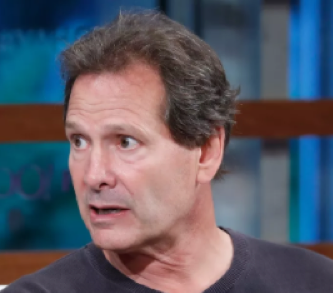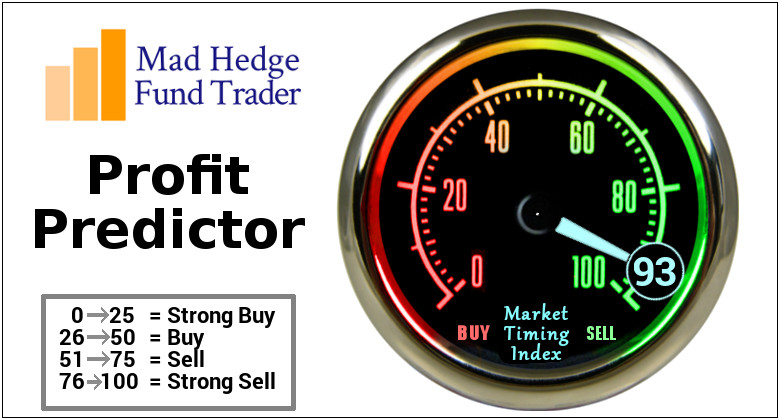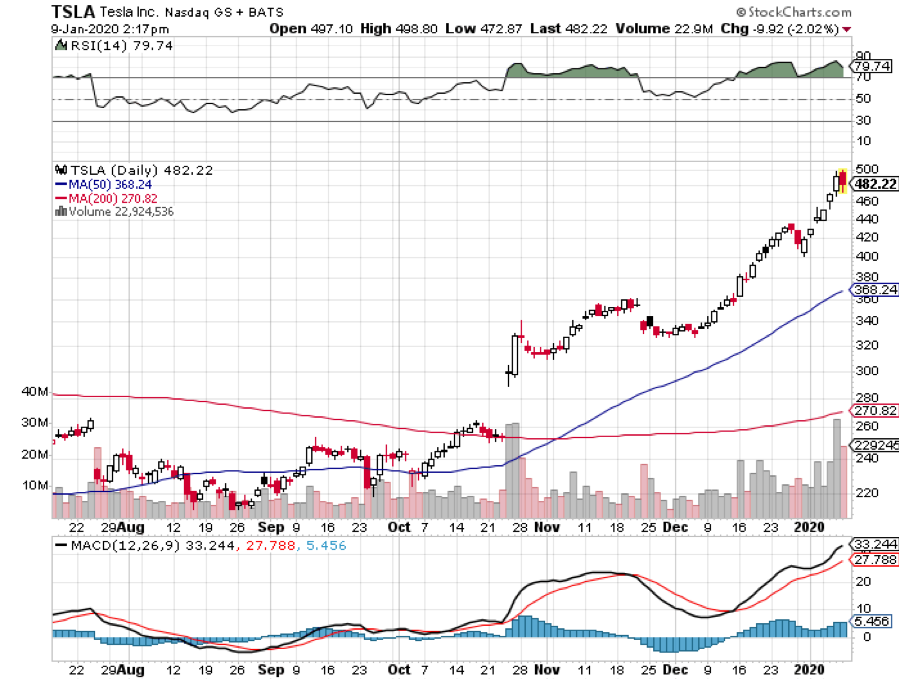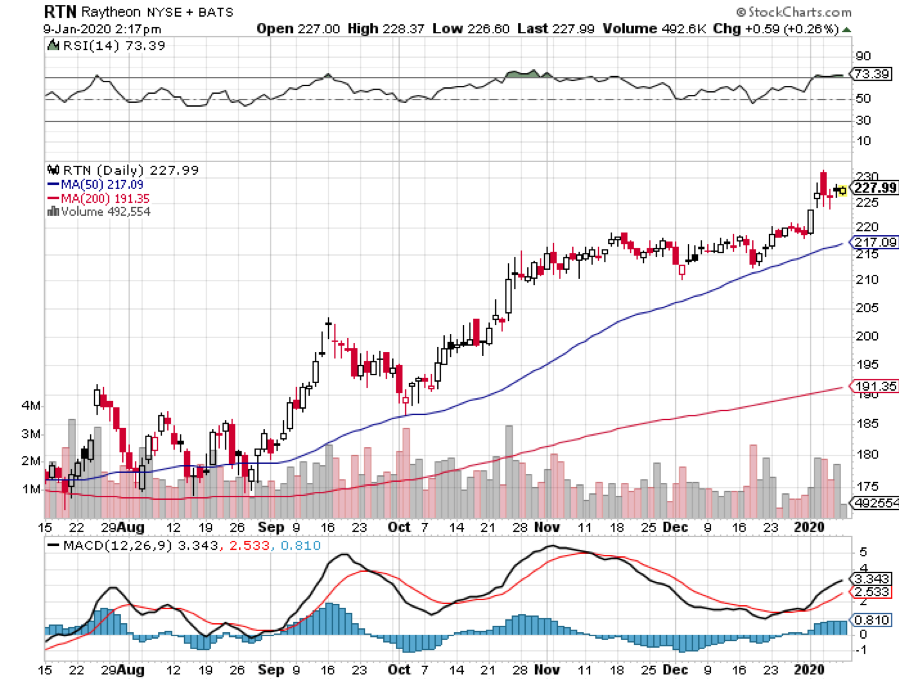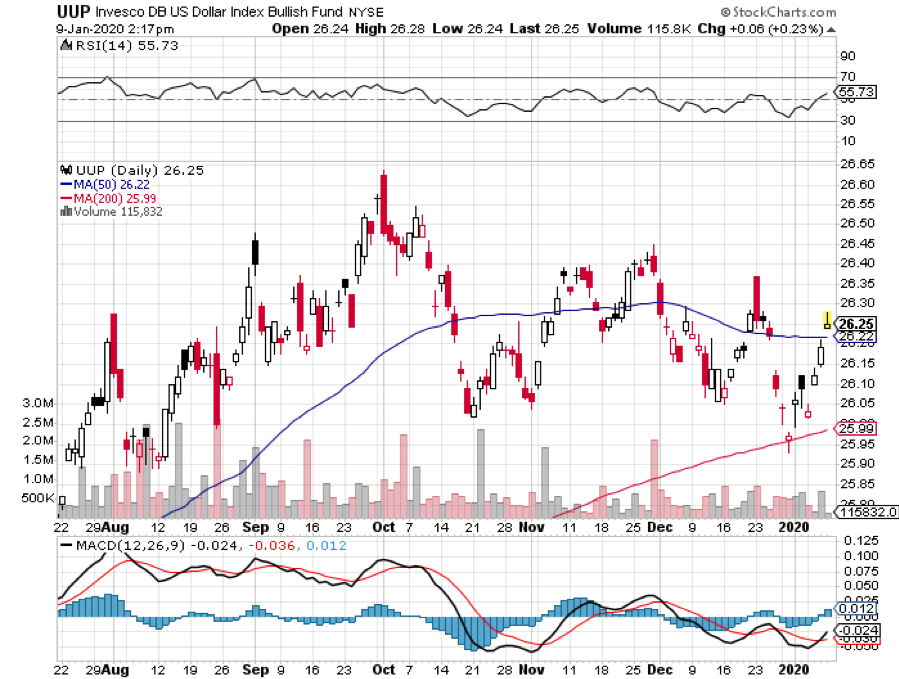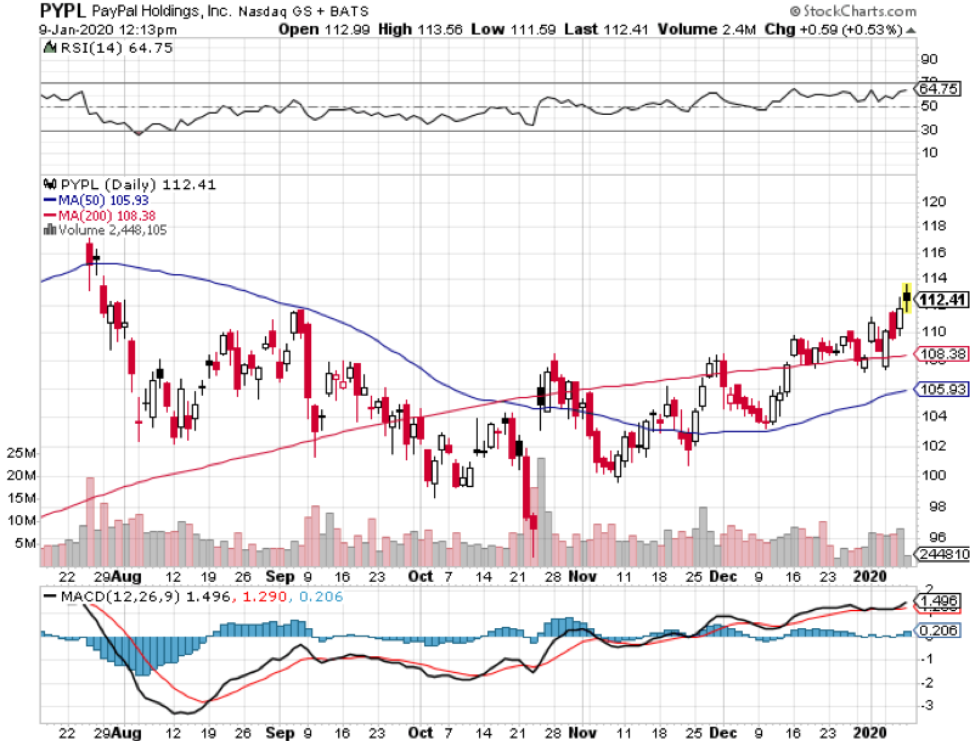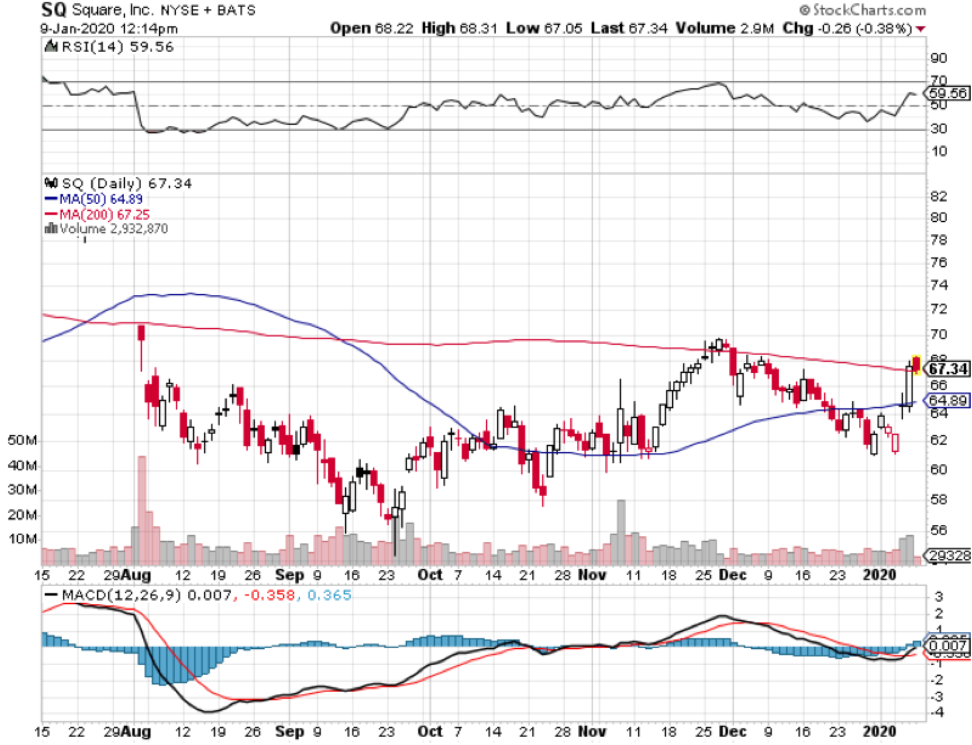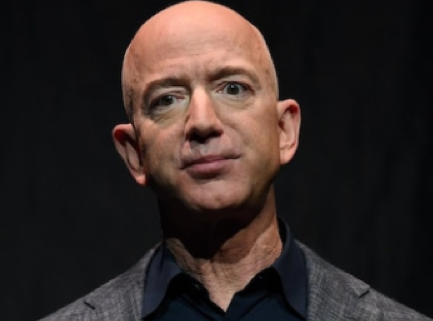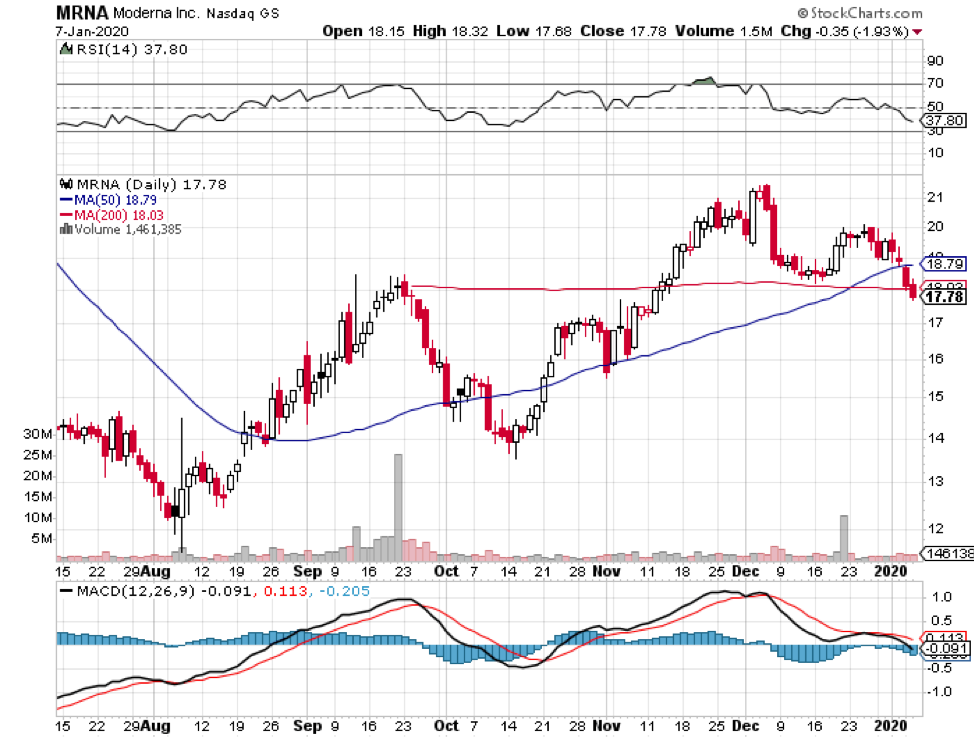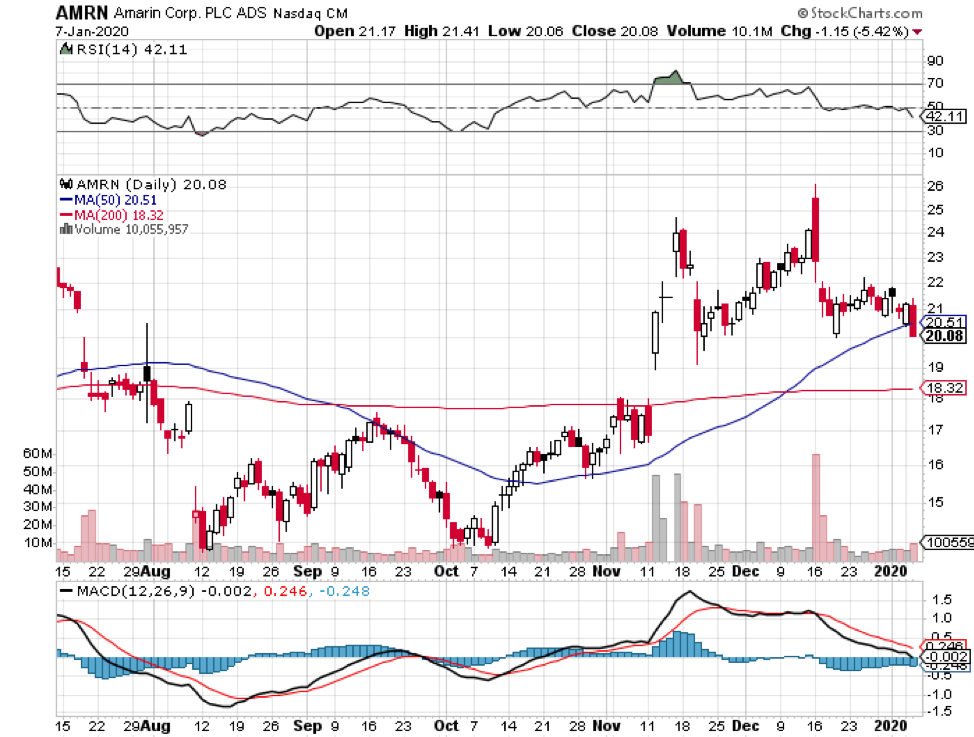“One way to understand human progress is to look at how technology has made products and services - once reserved for the elite - progressively more accessible and affordable.” – Said CEO of PayPal Dan Schulman
Global Market Comments
January 10, 2020
Fiat Lux
Featured Trade:
(FRIDAY, FEBRUARY 7 PERTH, AUSTRALIA STRATEGY LUNCHEON)
(JANUARY 8 BIWEEKLY STRATEGY WEBINAR Q&A),
(VIX), (VXX), (TSLA), (SIL), (SLV),
(WPM), (RTN), (NOC), (LMT), (BA), (EEM)
Below please find subscribers’ Q&A for the Mad Hedge Fund Trader January 8 Global Strategy Webinar broadcast from Silicon Valley, CA with my guest and co-host Bill Davis of the Mad Day Trader. Keep those questions coming!
Q: If the market is doing so well, why is the Fed flooding the market with liquidity?
A: It’s election year, so their primary focus is to get the president reelected and do everything they can to make sure that happens. If we continue at the current rate, the Fed will have zero ability to get us out of the next recession which will make it much deeper than it would be otherwise. Doing this level of borrowing and keeping interest rates near zero with the stock market going up 30% a year is insane, and we will be severely punished for it in the future.
Q: With the Volatility Index (VIX) near a 12-month low and the Mad Hedge Market Timing Index near an all-time high, is this a good time to put on LEAPs for the (VXX)?
A: Yes, in fact, a (VXX) LEAP (Long Term Equity Participation Security, or one-year-plus option spread), is the only LEAP I would put on right now. I get asked about LEAPs every day because returns on them are so huge, but I am holding back on a trade alert on a (VXX) leap because it seems like in January they really want to run this market high and run volatility down low. On the next move to a (VIX) in the $11 handle, you want to put out a one-year LEAP with a $16 strike. And that is essentially a guarantee that you will make money sometime in the coming year on a big down move in the stock market. (VXX) LEAPs are coming, just not yet.
Q: Do you think Iran is done with their attacks against the US or will there be more?
A: The belief there will be no more attacks is to call the end of a 40-year trend. There will be more attacks, and those are going to be your long side entry points. Every geopolitical crisis for the last 10 years has been a great entry point on the long side and the next one will be no different. Just hope you are not one of the victims.
Q: What would a war with Iran mean for the US economy and should I buy defense stocks?
A: You can take the Iraq war, which cost us about $4 trillion, and multiply that by three times to $12 trillion because Iran’s economy is three times the size of Iraq and has a much more sophisticated military. The Iranians are really in a good position because they know the US has no appetite for another Iraq, Afghanistan, or Vietnam. They just want us out of their neighborhood. As far as defense stocks, those really move on very long-term investments and production for government contracts. When you get an attack like this, you get a one-day pop of 5% and then they usually give it all back. So, I wouldn't be chasing defense stocks like Lockheed Martin (LMT), Northrop Grumman (NOC), and Raytheon (RTN) at these high levels—it’s a very high-risk trade.
Q: Will Boeing (BA) take heat from the Ukrainian crash in Tehran?
A: Yes. It’s down about $5, and you might even consider running the numbers on a February call spread. This may be the last chance to get into Boeing at those low levels. The 737 MAX will fly this year, their most important product.
Q: What’s your opinion on Thai Baht?
A: This really is the home here for opinion on all asset classes, large and small. The Thai Baht will rise. It’s a weak dollar play. Money is pouring into all the emerging currencies because of the massive overborrowing that’s going on in the U.S. Countries that overborrow and print money like crazy always debase their currencies over the long term. That makes emerging markets (EEM) a great buy, which are trading at half the valuation levels of US ones.
Q: U.S. hog farmers missed the opportunity of a lifetime last year because of African Swine Flu. Any thoughts on the price of pork and commodities for 2020?
A: They should do better now that we’re at least getting relief from an escalation of the trade war. However, I gave up covering agriculture because the American farmer is just too efficient; every year they just produce more and more crops with fewer and fewer inputs—it’s a loser’s game. They occasionally get bad weather and get a big price spike, but that Is totally unpredictable. I'm staying away from ag stocks. In terms of buying soybeans or Apple, or Google, or Amazon, I’ll take the tech stocks any day over ag’s. Plus, the insiders have a big advantage in ag’s.
Q: What is the ticker symbol for the Silver ETFs?
A: The Silver metal ETF is (SLV), Silver miners is (SIL), and the Silver Royalty Trust, Wheaton Precious Metals, is (WPM).
Q: Why has volatility been so minimal even with massive geopolitical risk going up?
A: Liquidity trumps all. This month, the fed is pumping a record $160 billion into the financial system, and all that money is going into stocks, making them go up and making volatility go down. Until that changes, this trend will continue.
Q: Apple just passed $300, is the next stop $400?
A: Yes, and we could get that this year in the run up to 5G in September. By the way, my average cost on my Apple shares split adjusted is 50 cents. I bought it in the late 1990s when the company was weeks away from bankruptcy.
Q: Any thoughts on Tesla (TSLA)?
A: Yes, go out and buy the car, not the stock. Wait for some kind of pullback. We have just had a fantastic run of good news kicking the stock from $180 up to $490. I think we will make it up to $550 on this run. But you don’t want to get involved unless you’re a day trader because now the risk is very high. The next big move for Tesla is going to be the announcement of a production factory in Berlin, where they will try to take on Mercedes, BMW, VW, and Audi on their home turf. Then, they will own Europe.
Good Luck and Good Trading
John Thomas
CEO & Publisher
The Diary of a Mad Hedge Fund Trader
While the Diary of a Mad Hedge Fund Trader focuses on investment over a one week to a six-month time frame, Mad Day Trader, provided by Bill Davis, will exploit money-making opportunities over a brief ten minute to three-day window. It is ideally suited for day traders, but can also be used by long-term investors to improve market timing for entry and exit points. Read more
Mad Hedge Technology Letter
January 10, 2020
Fiat Lux
Featured Trade:
(FINTECH IS GOING INTO OVERDRIVE)
(PYPL), (SQ), (MA), (V)
Last year was the year of Fintech and 2020 is the year when this industry goes into overdrive.
Let’s take a look at one of my top choices, PayPal (PYPL).
Millennials are the primary customer demographics to the main platform, but the attractiveness of peer-to-peer payment system Venmo is gaining momentum.
PayPal should be on a short list of fintech stocks for investors and there is certainly more room to run for the share price.
Last quarter’s numbers of 9.8 million net new actives mean that PayPal now has 295 million active accounts across all platforms.
Engagement continues to be a bright spot growing by 9% to almost 40 transactions per active account.
Mobile is a major contributor to success with 172 million consumers and 13.8 million merchants.
Venmo processed more than $27 billion in volume for the quarter, growing 64%.
They are doing $300 million in payments per day and an annual run rate that now exceeds $100 billion.
The Venmo team recently inked a deal with Synchrony to provide a Venmo credit card.
Credit products continue to be another gateway to more success with new consumer installment plans in the United States and Germany which allow PayPal customers to pay with streamlined monthly payments.
This capability is already leading to incremental sales and led to signing a long-term strategic partnership agreement with Citi Australia to develop consumer credit products for PayPal's customers in Australia.
Additional relationships were further expanded with Walmart launching PayPal Checkout as the sole payment instrument for its online grocery business in Mexico.
In Japan, PayPal is one of the official partners for the Japanese government's plan to promote cashless payments throughout the country.
PayPal now offers account linking through mobile devices with Capital One and PNC Bank in the United States.
If you thought their international strategy stopped there, there are other irons in the fire.
PayPal became the first non-Chinese payments company to be licensed to provide online payment services in China.
They announced in September that the People's Bank of China has approved a 70% equity interest in GoPay, a license provider of online payment services.
China is a tricky revenue proposition and it’s not guaranteed to flourish on the mainland, but this shows the pro-active way that PayPal seeks to expand its total addressable market and long-term growth prospects.
The license enables PayPal to expand upon relationships with existing partners like China Union Pay and AliExpress and forge fresh partnerships with China's financial institutions and technology platforms.
PayPal’s success has so far depended on innovation and acquisitions - I fully expect this trend to continue in 2020.
PayPal announced it was buying shopping and rewards platform Honey Science Corporation for $4 billion.
This year is the beginning of another compelling one-year bull case aided in part by higher expectations from those diverse set of partnerships, such as with MercadoLibre Inc. and Uber Technologies Inc., along with PayPal’s pricing, Honey online coupon transaction, and Venmo monetization.
I anticipate further sustained overperformance in margin expansion as well.
I expect an overall payments industry-wide volume growth of 11% in 2020 and PayPal will grow into its position in a still healthy broader economy.
Payment sector operating metrics, from credit card volume growth, to enterprise IT budget growth, to U.S. employment growth, are robust supporting the bull case for PayPal in 2020.
Aside from PayPal, my alternative favorites in the payments space that could see anywhere from 7%-20% share appreciation in 2020 are Square (SQ), Mastercard Inc. (MA), and Visa Inc. (V)
It is likely that 2020 will signal a new decade of super growth for the digital payments market.
And I expect PayPal to increase its solid footprint in web, in mobile app platforms, and in retail stores globally through organic growth, acquisitions, and partnerships.
PayPal’s profitable business model and pro-active management will help the share price reach new highs.
However, not only for fintech stocks, but the overall market is ripe for some profit-taking in the short-term because of the recent melt-up.
“One of the only ways to get out of a tight box is to invent your way out.” – Said Founder and CEO of Amazon Jeff Bezos
Mad Hedge Biotech & Healthcare Letter
January 9, 2020
Fiat Lux
Featured Trade:
(THE 2020 DARK HORSES OF BIOTECH)
(AMRN), (THOR), (SAN), (NBSE), (OHRP),
(MRNA), (MRK), (AZN), (VRTX), (RGLS), (ARWR)
For all the flak the healthcare sector has received for the exorbitant prices of its products and services, there’s no denying the fact that this industry had an incredibly remarkable decade -- and biotechnology proved to be one of the most lucrative markets when it comes to stocks that actually double or triple in value, sometimes even overnight.
The primary reason for this is that no one could predict the success or failure of clinical trials with any degree of accuracy, forcing investors to take into account elements of surprise in the valuation process in biotech.
Companies that analysts believe to be prime candidates for acquisition early on in their life cycle would end up repeatedly failing to lure viable tender offers for years. Meanwhile, dark horses emerge from the leftfield and snap up the best deals.
A good case in point would be how experts and investors alike missed the mark on Amarin Pharmaceutical’s (AMRN) cardiovascular treatment Vascepa. On the outset, analysts pegged the new prescription omega-3 treatment as a failure and a money sinkhole.
Instead, Vascepa surpassed all expectations and is now hailed as the fish oil supplement to demonstrate clear-cut cardiovascular benefits to high-risk heart attack patients.
In 2019 alone, Vascepa grew by 85% compared to its 2018 report, coming in between $410 million and $425 million in sales -- and 2020 is expected to be an even better year for this drug as sales are estimated to reach between $650 million and $700 million.
Another example is synthetic protein maker Synthorx (THOR), which was initially tagged as an ominous stock.
The company proved detractors wrong when it went on to fetch huge offers from giant biotech firms, with Sanofi SA (SAN) winning the bidding war over Synthorx to the tune of $2.5 billion.
This new year, though, promises to offer more predictability, especially on the merger and acquisition front.
Several blue-chip biotech’s are on the verge of key patent expirations in the next decade. On top of that, these companies are facing tremendous pressure from US politicians to cut down on the prices of their brand name drugs. Today, the State of California announced that it was going into the generic drug industry to undercut the majors.
These dual headwinds are expected to fuel an uptick in the demand for bolt-on acquisitions, which can provide the giant biotech’s with healthy levels of profit via large sales volumes as they attempt to slash their slashes to acceptable levels.
With this in mind, big biopharma’s will be willing to shell out top dollar to acquire promising companies this 2020.
Which biotech’s have the goods to take full advantage of this acquisition demand?
One up-and-coming company tagged as a red-hot acquisition candidate is NeuBase Therapeutics (NBSE).
Founded in 2018, this Pittsburgh company has raked in $9 million in funding so far to develop treatments that target rare, genetic neurological disorders. Neubase’s platform, called peptide-nucleic acid antisense oligonucleotide or PATrOL technology, was developed at Carnegie Melon University.
Basically, this technology offers gene-silencing therapies for its patients suffering from rare genetic disorders.
In July 2019, NeuBase engaged in a reverse merger with fellow biotech innovator Ohr Pharmaceuticals (OHRP). This partnership is expected to rake in massive rewards since both companies greatly complement each other’s work.
NeuBase’s work zeroes in on curing rare genetic diseases via gene-silencing treatments while Ohr’s research is geared towards helping patients suffering from cancer cachexia and macular degeneration.
The combined efforts of these two should result in a wider reach as they offer cutting-edge treatments to highly lucrative and specialized markets.
As of December 2019, NeuBase has a recorded market cap of $114.38 million. Considering all its assets and the way its pipeline is shaping up, NeuBase could easily be your best sleeper stock in 2020.
Another biotech company to watch out for this year is Moderna Inc (MRNA), which has raised a whopping $1.8 billion in funding over 10 rounds.
So far, this company has attracted blue-chip companies in the form of Merck and Co (MRK), which invested $125 million, and AstraZeneca (AZN) with $474 million so far.
In terms of stability, Moderna has been doing quite well for itself with $68.2 million in estimated annual revenue.
In 2019, Moderna shared that it has at least 11 programs set for clinical trials along with 20 development candidates. Its research leans towards producing cancer vaccines and localized regenerative therapeutics.
Its strategic alliances not only with AstraZeneca and Merck but also with Vertex Pharmaceuticals (VRTX), Biomedical Advanced Research and Development Authority, and even the Bill & Melinda Gates Foundation equip Moderna with a remarkable competitive edge against rivals Regulus Therapeutics (RGLS), Arrowhead Pharmaceuticals (ARWR), and CureVac.
I’m expecting huge movements in the biotech market in 2020 as the curtain rises on all these promising technologies and the rise of this industry becomes impossible to ignore.
While the Diary of a Mad Hedge Fund Trader focuses on investment over a one week to the six-month time frame, Mad Day Trader, provided by Bill Davis, will exploit money-making opportunities over a brief ten minute to three-day window. It is ideally suited for day traders, but can also be used by long-term investors to improve market timing for entry and exit points. Read more
Legal Disclaimer
There is a very high degree of risk involved in trading. Past results are not indicative of future returns. MadHedgeFundTrader.com and all individuals affiliated with this site assume no responsibilities for your trading and investment results. The indicators, strategies, columns, articles and all other features are for educational purposes only and should not be construed as investment advice. Information for futures trading observations are obtained from sources believed to be reliable, but we do not warrant its completeness or accuracy, or warrant any results from the use of the information. Your use of the trading observations is entirely at your own risk and it is your sole responsibility to evaluate the accuracy, completeness and usefulness of the information. You must assess the risk of any trade with your broker and make your own independent decisions regarding any securities mentioned herein. Affiliates of MadHedgeFundTrader.com may have a position or effect transactions in the securities described herein (or options thereon) and/or otherwise employ trading strategies that may be consistent or inconsistent with the provided strategies.

